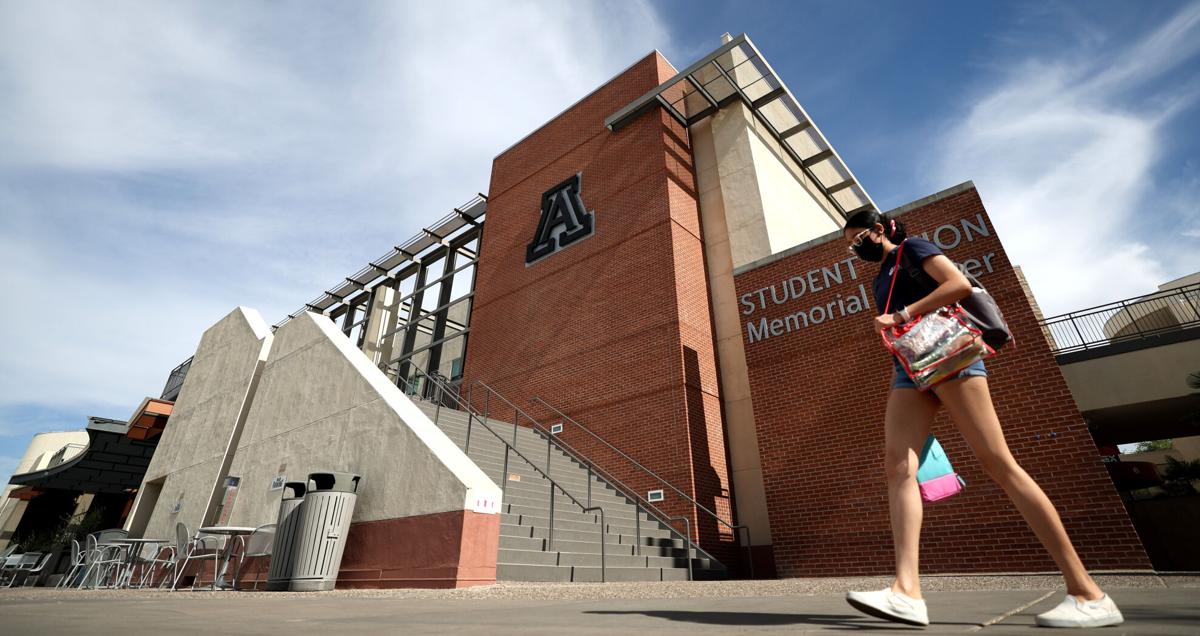While the University of Arizona is the only land-grant university in the state, it is nowhere close to the only Hispanic-serving institution in Arizona.
The title is bestowed upon most universities and community colleges in the state. But what does that mean for federal funding? And how does it affect students?
Here’s what to know.
How did they get the designation?
According to Title III of the Higher Education Act of 1965, to receive federal funding and be designated a Hispanic-serving institution, a college or university must:
Be accredited by an agency or association recognized by the U.S. Department of Education.
Offer at least two-year academic programs that lead to a degree.
Have at least 25% Hispanic undergraduate full-time equivalent student enrollment.
How many are there?
Most community colleges and universities in Arizona, including the state’s three public universities, hold this status because of the high number of Hispanic students they serve.
There are 516 Hispanic-serving institutions in the United States, located in 28 states, the District of Columbia and Puerto Rico.
According to the Department of Education, about 4.6 million students were enrolled at HSIs in fall 2021, the most recent data available. The same year, there were 2.09 million Hispanic students enrolled at HSIs.
What are the benefits?
Marla Franco, the UA’s vice president of HSI initiatives and the co-founder of the AZ HSI Consortium, says, “the actual practice and commitment of being an HSI far exceeds enrolling Hispanic students.”
“It’s about creating an organizational culture that invites students’ cultural backgrounds and lived experiences into their learning experiences,” she said, “and ensures inclusive and equitable pathways that ensure students meet their college attainment goals in ways that matter most to them, their families, and their communities.”
Another benefit of being an HSI: The federal government provides financial assistance through various grant programs.
The Department of Education awards funding to institutions in a variety of ways. There’s the Developing Hispanic-Serving Institutions program, the HSI-Science, Technology, Engineering or Mathematics and Articulation program, and the Promoting Postbaccalaureate Opportunities for Hispanic Americans program.
Last fall, the Biden-Harris administration announced it would award more than $40 million to HSIs through the Developing HSI program. It awarded 64 grants, totaling more than $37 million. The UA was one of those grantees.
How is the UA using the role?
According to the UA’s HSI annual report, the university’s total Hispanic enrollment is 25.7%, with an undergraduate Hispanic enrollment of 27.4% and a graduate student Hispanic enrollment of 19.4%. Additionally, 25.2% of faculty and staff are Hispanic/Latinx.
It was recently announced the UA will be part of the Developing HSIs program, which “provides grants to assist HSI to expand education opportunities for, and improve the attainment of, Hispanic students,” according to the Department of Education.
The UA’s project for that program is called ADELANTE: Advancing Culturally Responsive Place-Based Educational Opportunities for Latinx Students in the Borderlands.
According to the UA’s abstract submitted to the Department of Education, the project will “increase students’ access to place-based culturally responsive educational experiences, increase students’ career readiness and post-graduation success and strengthen institutional capacity to increase place-based culturally responsive educational experiences for our Hispanic/Latinx and low-income students to support their persistence rates, sense of belonging on campus and career readiness.”
Additionally, the UA was awarded an HSI-Science, Technology, Engineering or Mathematics and Articulation Program grant, which is meant to “increase the number of Hispanic and other low-income students attaining degrees in the fields of science, technology, engineering or mathematics” and to “develop model transfer and articulation agreements between two-year and four-year institutions in such fields.”
The UA’s proposal, called “PROJECT CREAR,” has multiple key takeaways. The UA is planning to develop “curricular societal impact group pathways for freshman and transfer students that build a sense of belonging and self-efficacy, and scaffold STEM research opportunities focused on problems that have social impact in the Hispanic students’ communities.”
Additionally, the UA will develop “course-based undergraduate research curriculum in introductory STEM lab classes and general education courses to increase success rates of Hispanic” students.
It’s not just the UA
Pima Community College, another HSI, has also qualified for Department of Education grants.
Get your morning recap of today's local news and read the full stories here: tucne.ws/morning
PCC developed an HSI-STEM project called “IT Knowledge in Context” that “increases student enrollment, persistence, retention, graduation and transfer through a suite of student services including advising/coaching, tutoring and peer mentoring; a system of deliberate outreach high school students (and other youth), as well as the community; and internships for students.”





